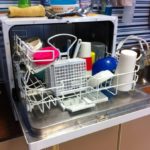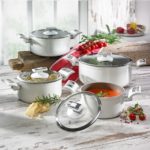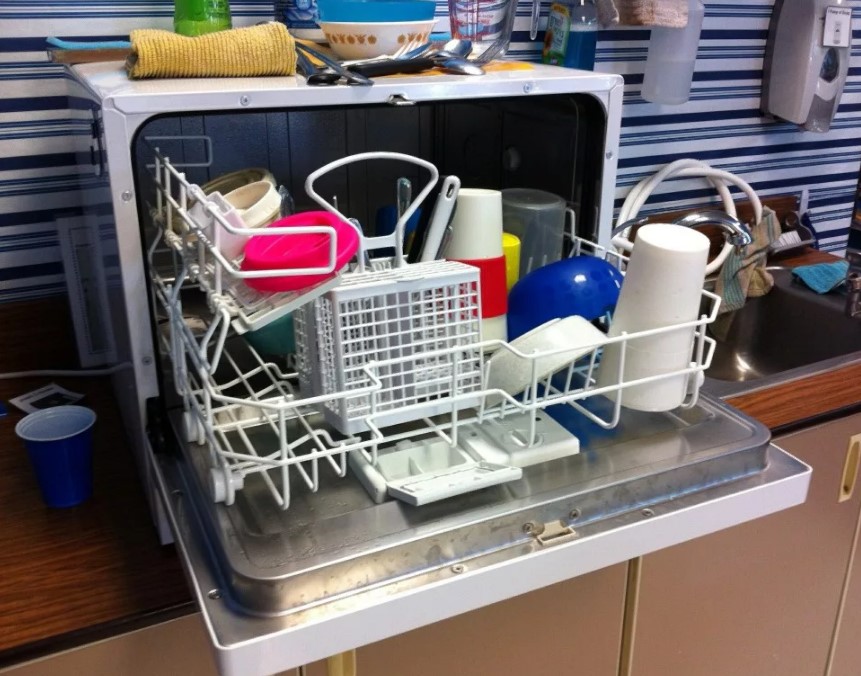Can pots be washed in the dishwasher?
Every good housewife knows that the most time-consuming step in washing dishes is cleaning the pots, because they get the most damage during cooking. The lids are constantly stained with hardened grease, which is difficult to clean. But the areas around the handles are especially challenging. And the rest of the surface of the pans requires careful care. And so, instead of enjoying the long-awaited rest, we stand in the kitchen, chained to the sink.
The famous phrase about the woman and the dishwasher immediately comes to mind. But this wonderful invention can really make your daily kitchen routine easier. Let's figure out the principle of its operation and find out whether it can be used to wash pots, and if so, which ones.
The content of the article
What are the stages of washing dishes in a dishwasher?
Most often, manufacturers describe in detail the operating process of the device. But it is written in dry language, so not everyone can get through the technical jungle and find out exactly how the unit works. In fact, everything can be explained in words that will be understandable even to people far from the world of engineering.
The washing process consists of the following steps:
- Loading. First, you need to place all dirty dishes inside the appliance.In this case, knives, spoons and forks should be placed strictly horizontally. Most models have a special tray for this.
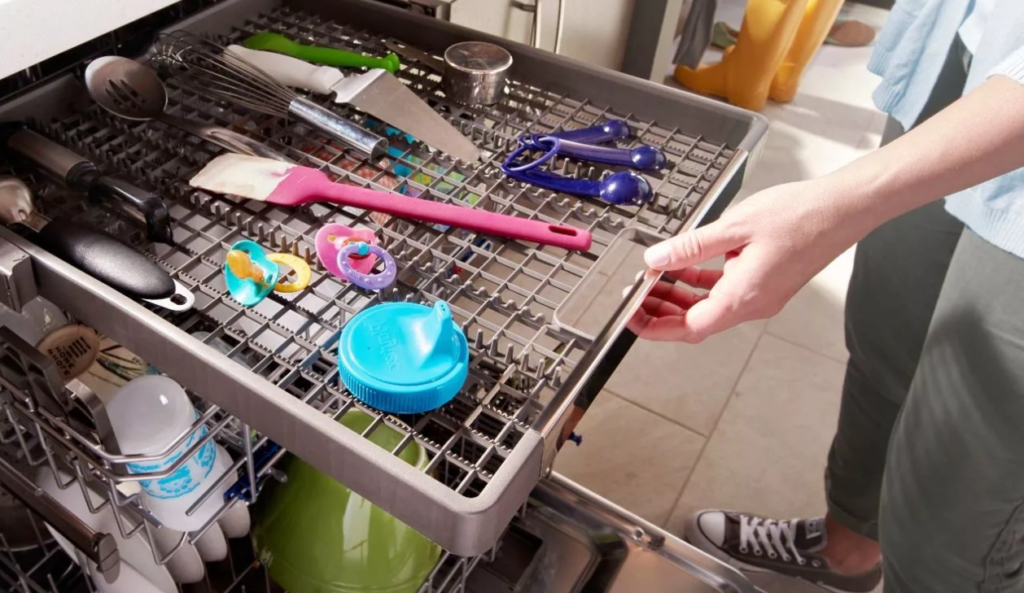
- Inclusion. You should set the desired mode and press the “Power” or “Start” button on the device panel. After turning on, the machine will begin to draw water, which will fall into the compartment intended for this.
- You need to put detergent in the dispenser. After starting the unit, it will begin to flow into the water and mix with it, creating a soap solution. This can be a special gel, powder or tablets. When the machine has collected the required amount of liquid, it will start heating the water.
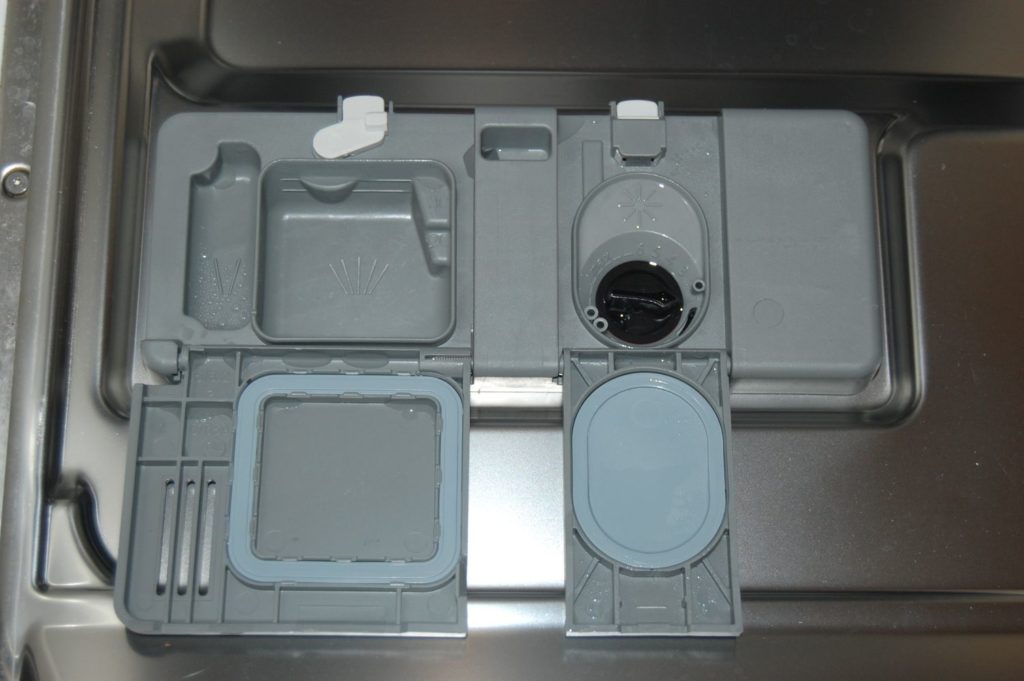
- If the dishes are covered with a thick layer of fat or burnt pieces of food have stuck to its surface, first set the “Pre-soak” mode. Once activated, the cleaning solution will be sprayed in small quantities onto the kitchen utensils.
- After this, the “Primary rinse” mode will turn on. In this case, the remaining food will be washed away under the pressure of the water jet. In this mode, water is supplied through a special sprayer, which is located under the basket for kitchen utensils.
- Most models have a “re-rinse” function. When activated, the machine will use the water collected after the first rinse. This option will allow you to save water resources and, accordingly, money. Upon completion of the re-rinse, the liquid will be drained after a corresponding signal is given from the control panel. Then the unit will again collect a small amount of rinse liquid, which it will drain into the sewage system.
- To achieve the desired result, the dishes should be rinsed again. This way the device will completely remove pieces of food and household chemical residues.
Modern units are equipped with a function for drying kitchen utensils. Depending on the specific model, the process can be natural or forced. In the first case, the dishes dry gradually under the influence of convection. In the second, a hot stream of air is forced into the unit.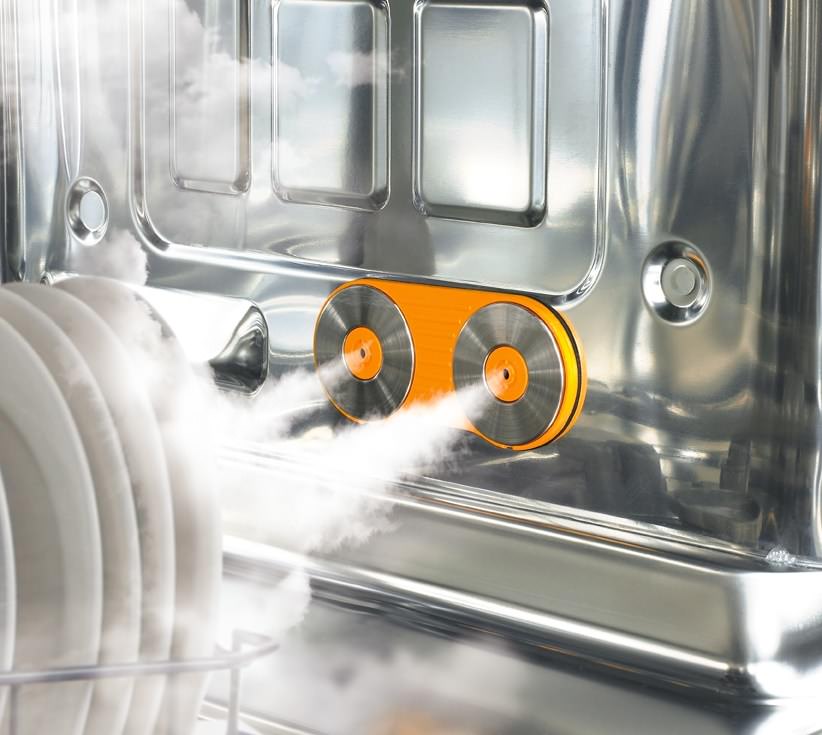
Reference. There is an opinion that the entire contribution to the development of modern technologies was made by representatives of the stronger half of humanity. However, the inventor of the dishwasher is the American Josephine Cochrane, who was tired of the daily need to wash a mountain of dirty dishes.
Which pans can be washed in the dishwasher?
To ensure that the device is able to cope with even the most severe stains, household chemicals are used that are intended only for dishwashers. Such detergents are more aggressive than those we use for hand washing. In addition, some modes heat the water up to 90 degrees. Therefore, fragile or porous items should not be washed in the device. These include:
- salad bowls in the form of pans made of thin glass, porcelain and other fragile materials;
- porcelain tureens;
- pots and pans made of clay, ceramics and aluminum;
- non-stick pans;
- cauldrons and frying pans made of cast iron;
- objects with wooden elements.
Most will ask: “What then can be washed in the dishwasher, since the list of prohibited items is quite lengthy?” The following types of pots can be washed without restrictions:
- made of stainless steel;
- small cast iron objects coated with high-quality enamel;
- made of heat-resistant glass, designed for placement in a microwave or oven;
- modern models made of dense ceramics, coated with a special protective layer.

Reference. Information on whether the pan can be washed in PMM can be found at the bottom of the item. Therefore, pay attention to the presence of appropriate markings before purchasing kitchen utensils.
How to wash pots in the dishwasher
So, now we know which pans can be washed in PMM. Now let's find out how to do this correctly to achieve the desired result, without damaging the device:
- Before placing objects in the PMM, remove large particles of food.
- Check that the product can be washed in the unit.
- You need to place the pan in the lower basket. Placement option: upside down. It is important that large kitchen utensils do not interfere with the normal functioning of household appliances.
- Choose detergents that contain enzymes. These chemical compounds help in the fight against even severe pollution.
- Set to intensive mode. It is most suitable for large items.
- Drying won't hurt. Therefore, leave the kitchen utensils inside the machine until completely dry.
The main task of a dishwasher is to make a person’s life easier by eliminating the daily need to manually wash dishes. The main thing is to choose household appliances that can cope with even severe dirt. And to achieve the desired result, make the device easier to operate. To do this, wash the dishes after each use so that a persistent crust of dirt or difficult-to-remove grease deposits do not form on their surface.

